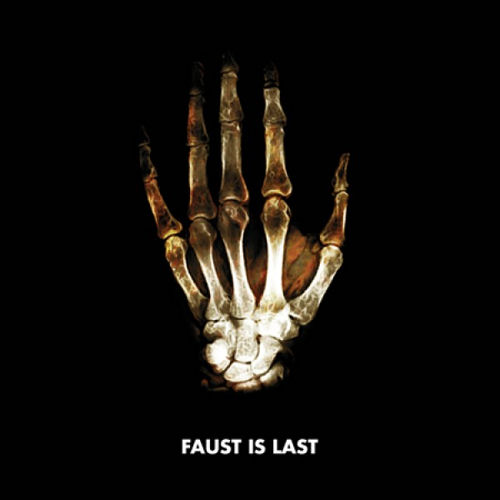
Faust: Faust Is Last
By Scott Branson 17 June 2010
The latest album from mythical Krautrock group Faust is a sprawling beast that is hard to scrutinize. Faust, in typical complexity, leaves little foothold for the casual listener. With 22 songs that together last over an hour and half, this album demands multiple listens before it even begins to reveal its structure. To categorize the album, one might try to split it into twos. The songs veer from one pole to another; from instrumental non-traditional pieces to song-based garage rockers; from soft ambient tones to harsh noise; from guitar-led songs to synth-driven ones; from songs with traditional rock-style drumbeats to songs that seem about to split their seams rhythmically; and so on. Even after dividing the album into recognizable categories, repeat listening doesn’t necessarily reveal its cohesion.
Melodic ideas do return throughout the album and give it some cyclical movement. The first track, “Brumm und Blech”, with its trilling guitar lines that call to mind a more contained version of the Hendrix from Axis and its organ melody that quietly asserts itself at the beginning and end, finds a reprise near the end of the album in “SofTones” (a literal description of what the song is giving us). The two most classifiable songs, “Hit Me” and “I Don’t Buy Your Shit No More”, which both feature vocals that repeat the song titles throughout, sound like they were hammered out in the same garage. Yet repeating moments do not interfere with the album’s overall forward-moving arc.
What Faust has over the many younger bands that cite them as an influence is an aptitude for improvisation. Most Krautrock-inspired bands can pull off the drone aspect of the genre but leave out the excitement of innovation. That’s why live shows of present-day Krautrock descendants can be incredibly boring. They can do nothing but what they’ve already done on the album. Faust plays unexpected notes and puts in random sounds. Even more than instrumental improvisation, Faust excels in compositional innovation. It is this strength that gives the album a kind of linear development and makes it so hard to recap. The songs are often so idea-driven that they leave a strange impression.
Faust produces extremely cerebral music, despite the pulsing beats and screaming vocals that would normally bespeak a more emotion-driven band. Even when the band does not produce sound collages and instead uses traditional song structures, the songs come off intellectually, making references to various rock melodies or melding songs into one another as if they were little snippets or glimpses into the creative process of the musician. Faust pushes the two sides of Krautrock: the repetitive (doing it to death) and the linear (building new sounds). The dual structure holds up, but these two sides can converge. A good idea speaks for itself and doesn’t need embellishment. So when Faust explores a melody or a beat, it pushes it to its natural conclusion, putting the idea through the ringer on the way.
The most constant focus of the songs, despite all the noise being made on top of them, is the drums. The drums send up their own version of noise, as they are looped and delayed and distorted. One of the hallmark sounds of Krautrock, the 4/4 motorik beat, gets flipped on its head. On “Chrome”, the drums seem like they are about to go out of control, only tethered by the constant and repetitive strumming of the guitar and pounding of the keys.
The lineup on Faust Is Last only contains one of the original members, Hans Jochem Irmler. The rest of the group hail from one of the more persistent incarnations of Faust that began playing together in the late ‘90s. (Some of the other original members still play live together and even record, but like a good collective, the ensemble rotates.) Many of the songs on Faust Is Last have a very ‘60s sound in terms of production and chord structure, even while the band references many different developments of rock and roll, like the death metal-style vocals on “In But Out”, sung over a fuzzy mess of bass and drums.
Perhaps the most stable thing about Faust is the way they develop from and react to the ‘60s psychedelic sound. Though it may have been done before, it’s hard to resist making something of the repeated images of x-rayed fists (Faust) that have adorned many of the band’s album covers, including the latest. Faust x-rays rock and roll to reveal its structure. Then it rebuilds it into a different form. Even though it offers a hand, it leaves little to hold on to. This is a difficult but rewarding album that goes deep—straight to the bones.
